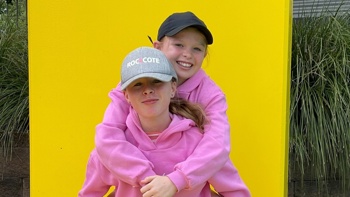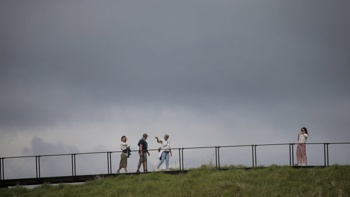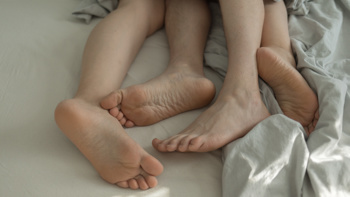Shops, barbers, bars and cafes can open under alert level 2, Prime Minister Jacinda Ardern says.
Kiwis can expand their bubbles to include friends and family and travel "safely" around the country, Ardern said. It comes as one new Covid-19 case was announced for the day.
Public parks and recreational sports facilities will be open again, and professional sport can resume again such as Super Rugby and the national netball league.
Mass gathering rules will still apply so there will not be any crowds.
She said New Zealand should think about being halfway down Everest in the fight against Covid-19, and no one would want to climb back up, but it was pertinent to consider that the descent was the most dangerous.
Ardern said ECE centres and schools will open at level 2, and with so few cases in New Zealand, those will be safe environments for students and staff.
Director general of health Ashley Bloomfield said there will be a 2m physical distancing guideline for strangers and 1m for people you know, but a "careful hug" was okay for close friends and family.
People at higher risk, such as people over 70 or with underlying health conditions, would have the same rules under level 2 as everyone else.
Ardern was confident level 2 will be enforced, but an outbreak of cases would trigger a return to level 3.
"No one wants that."
Ardern said indoor gatherings would be limited to up to 100 people under alert level 2, while outdoor gatherings will also be limited to 100. Weddings and concerts could happen, as long as there were fewer than 100 people
She said people would no longer have to stick to their bubble, and people can see family and friends again.
Space, hygiene and contact tracing principles still applied. Have people over for dinner, she said, but keep numbers small and it was not the time for a large party.
Ardern said further guidance on things like dinner parties will be released in the coming days.
But large gatherings and cramming people into a home was a "no-no".
On domestic travel, which was previously restricted under the level 2 guidelines, Ardern said people will be allowed to move "safely" around the country.
People should keep physical distance, for example, at airports.
This will boost domestic tourism, she said, and people will be excited to get a haircut and have a holiday.
Ardern said domestic travel for a large gathering was "not a safe purpose for travel".
Hospitality, including cafes and bars, can open but that meant only businesses that can apply the thee Ss. The first is seated - capacity only for how many can be seated to prevent congestion, Ardern says.
The second S is separation. There has to be space between people and tables, for example, and each table must have a single server (third S), and service at the table rather than the counter.
Contact tracing will likely include QR codes, but manual or digital recording should be used in the meantime for customers.
Customer contact outside venues, in queues for instance, will have to be controlled or businesses will risk losing their ability to stay open
Ardern said limiting contact with strangers will be challenging for hospitality, which had led to the three Ss.
"Certain venues, nightclubs and so on, unless they adapt in that way, they won't be able to operate," she said.
Ardern said indoor gatherings would be limited to up to 100 people, while outdoor gatherings will also be limited to 100.
Service premises and office spaces can open, but "the fewer people the better" to make contact tracing easier and faster.
Staggered start times and working from home should still be a part of the mix, she said, and each business can work out their best practices.
Hairdressers and retail stores can open again, but surfaces must be cleaned and physical distance should be kept. Malls can open and be treated like supermarkets are now, including with appropriate PPE where needed.
Bars, cafes and restaurants will not need to have contactless payments, she said.
Eftpos terminals, door handles or high-contact surfaces will need to be cleaned regularly.
Bloomfield said mask wearing for hairdressers and in beauty salons made sense at level 2, but at the moment there was no intention to make mask-wearing compulsory.
Ardern said lives had been "quite different" for six weeks now.
She said New Zealanders should be proud of the low number of cases, and Kiwis had been innovative in trying to operate safely under level 3. There was one new case announced today.
Cabinet will consider the evidence about moving to level 2 on Monday, with the latest Covid-19 data.
Distance learning will still be available for those unable to return to school, such as for people isolating because they have Covid-19, she said.
A positive case in a school will mean that school will close for 72 hours to enable contact tracing, and possibly for 14 days if required.
Schools will open at the start of a week, whenever a decision is made about moving to level 2, she said.
Kids should still stay at home if sick.
Schools will also have to keep attendance records for contact tracing purposes.
"No one wants a second wave - no one," Ardern said.
The PM said the virus had bounced back in other countries, and New Zealand needed to "stay in control".
Level 3 had been about restricting contact as much as possible, and level 2 was still aimed at reducing close contact with strangers.
"It is very unlikely that we have hunted down every single case of Covid-19. If stray cases start new chains of transmission, we might not find them for a month," Ardern said.
She said level 2 was about keeping the economy back up and running, but "play it safe".
The health principles were the same, including to stay home if you are even "slightly sick", being tested for even a runny nose or a sore throat, and washing hands often and properly all of the time.
"Don't pass other people your phone," was one example the PM gave.
The border will still be closed to non-New Zealanders.
Test, contact trace and isolate would remain in place, she said.
Keeping physical distance was also important, she said. If someone with a cough left their home, the safest distance from them is two metres.
Level 2 meant more contact with more people in more places, so 2 metres should be kept from strangers, but less was allowed among people you know "because we can find you and we can find them" for contact tracing.
Ardern repeated that contact with strangers will have to be limited.
"When it comes time to move, we want to move with confidence."
That meant the possibility of moving into level 2 in a phased way, Ardern said.
"No decisions have been made yet. We wait for all of the data before we do that."
Making several steps in level 2 rather than one big step might be what transpires, depending on the latest health advice on Monday, Ardern said.
The Government will not have all the answers, and Ardern said businesses with questions should reach out to the Ministry of Business Innovation and Employment.
She said New Zealand should think about being halfway down Everest, and no one would want to climb back up, but it was pertinent to consider that the descent was the most dangerous.
Bloomfield announced one new Covid-19 case today. The new case is linked to the Matamata cluster.
The Waikato DHB is calling for anyone in the area to seek advice if they want to be tested, he said.
The total number of confirmed and probable Covid-19 cases is 1489, and 1332 people have recovered, or 89 per cent of all cases.
There are two people in hospital. The death toll from Covid-19 in New Zealand remains at 21.
Testing was higher than 7000 yesterday for the first time and Bloomfield said this was a good sign as DHBs were getting ready for surveillance testing.
He said a review had been completed into the use of masks in the general public, and there were risks and benefits for wearing masks.
Bloomfield said over 500 people in the Marist College cluster had been tested, and there had only been one positive test, which was revealed yesterday.
He said all the cases this week all linked to existing cases "which is exactly where we want to be."
He said the review of 32 exemptions had now been completed, and all the decisions had been processed correctly.
However, some of the findings would have been different under the new criteria following the judicial review last week.
One person had been allowed to leave managed isolation to visit a dying relative.
Take your Radio, Podcasts and Music with you









